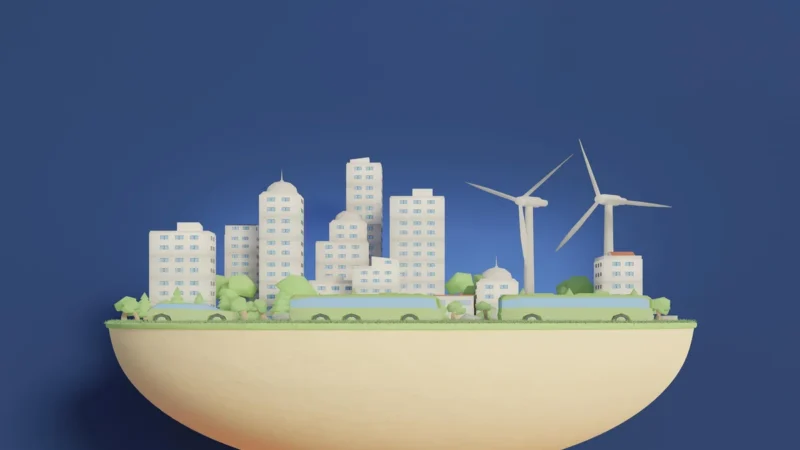The Microplastic Challenge: Innovative Approaches to Reduce Pollution Everywhere

Microplastics have become a ubiquitous environmental concern, pervading our oceans, soil, air, and even our food chain. These minuscule plastic particles, measuring less than 5 millimeters in size, are a result of the breakdown of larger plastic items or are intentionally manufactured for specific purposes like microbeads in personal care products. Despite their size, their impact is colossal, posing a significant threat to ecosystems and human health worldwide.
The Scope of the Issue
Microplastics are virtually everywhere – from the depths of the ocean to the highest mountain peaks. They are found in marine environments, adversely affecting marine life, and subsequently entering the human food chain. They’re also present in freshwater bodies, agricultural soils, and the atmosphere, posing multifaceted challenges.
Their small size and persistence make them difficult to remove from the environment once they are introduced. Traditional methods of waste management fall short in tackling this issue comprehensively. Therefore, innovative approaches are crucial in combatting the spread and impact of microplastics.
Innovative Solutions: A Multi-Faceted Approach
1. Prevention at the Source: One of the most effective strategies is to prevent microplastics from entering the environment in the first place. This involves measures such as banning or regulating the use of microplastics in consumer products like cosmetics and cleaning agents. Companies are increasingly adopting biodegradable alternatives to microplastics, reducing their impact on the environment.
2. Advanced Filtration Technologies: Innovative filtration systems capable of capturing microplastics from wastewater before they reach natural water bodies show promise. These technologies range from simple mesh filters to more sophisticated nanotechnology-based filtration methods.
3. Biodegradation and Remediation Techniques: Researchers are exploring biological solutions where microorganisms or enzymes break down plastics into harmless byproducts. Additionally, there’s ongoing research into utilizing natural processes like phytoremediation, where specific plants absorb and detoxify microplastics from contaminated soil.
4. Public Awareness and Education: Raising public awareness is crucial. Educating individuals about the sources and consequences of microplastics fosters behavioral changes, encouraging responsible consumption and disposal habits.
5. Policy and Regulation: Governmental policies and international agreements play a pivotal role in addressing the microplastic crisis. Establishing stringent regulations, promoting sustainable practices, and investing in research are integral parts of the solution.
Collaborative Efforts for a Sustainable Future
Addressing the microplastic challenge demands a collaborative effort from various stakeholders. Governments, industries, scientists, environmental organizations, and the general public all have roles to play. Collaboration fosters innovation, allowing for the exchange of ideas and resources necessary to develop effective solutions.
Technological advancements and scientific research continuously push the boundaries of what’s possible in mitigating microplastic pollution. However, it’s equally crucial to emphasize the importance of individual actions. Small changes in consumer behavior, such as reducing plastic usage and proper waste disposal, collectively contribute to a significant impact on reducing microplastics in the environment.
Key Takeaways
Tackling the pervasive issue of microplastic pollution requires a multi-pronged approach involving innovation, regulation, education, and collective action. By integrating these strategies, we can strive towards a cleaner, healthier planet for future generations.
FAQs:
Microplastics are tiny plastic particles measuring less than 5 millimeters in size. They come from various sources:
Primary microplastics: These are intentionally manufactured small plastic particles, like microbeads in cosmetics, or fibers released from synthetic clothing.
Secondary microplastics: These are created from the breakdown of larger plastic items due to weathering, sunlight, or mechanical action.
Microplastics pose significant threats:
Environmental impact: They accumulate in ecosystems, harming marine life, contaminating soil, and entering the food chain.
Human health: There are concerns about potential health risks due to the ingestion of microplastics through contaminated water and food.
Microplastics are ubiquitous:
Oceans and water bodies: They’re pervasive in marine environments, affecting aquatic life.
Soil: They contaminate agricultural land, affecting plant growth and ecosystems.
Air: Microplastics can be airborne, potentially affecting respiratory health.
Some regions have started implementing regulations to tackle microplastic pollution. For instance, bans on microbeads in cosmetics and restrictions on single-use plastics in certain areas. However, comprehensive global regulations are still evolving.
Microplastics pose long-term threats to ecosystems, biodiversity, and human health. Addressing this issue is crucial for a sustainable and healthier future for both the environment and humanity.


